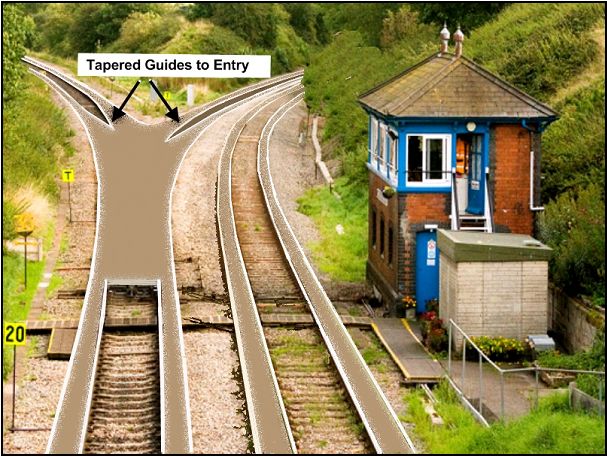
Large public service vehicles (PSVs) such as buses and coaches could be adapted to use the INITIATE network
as well as vans and trucks, providing a more frequent service than the more inflexible steel tyred trains. When
the system has low demand, single vehicles could be far better utilised than multiple carriage units; whilst under
higher demand vehicles could be joined up into ‘pneumatic tyred’ trains. ELECAT’s could also be adapted to
use the INITIATE network.
Figure 29 INITIATE junction
Public transport could be improved even further by using a variation of the COAST concept for larger PSVs on
the INITIATE network. Here a battery powered bus or coach embarks several groups of passengers at
strategically located points near to their places of residence. The vehicle then enters the INITIATE network, and
drives along it without stopping, whilst simultaneously being powered and charged by the mains electricity
supply until reaching an exit point within the metropolitan area. When it exits the INITIATE network the
vehicle switches back to battery power to drive along the city roads to disembark groups off at similar
strategically optimised locations, to minimise further travel without the passengers having to change vehicles.
The same procedure is adopted in reverse when commuters return home (see figure 30). Alternatively, the
INITIATE bus could continue in the role of a normal bus whilst on the city road network to join what were
previously unlinked main line railway stations so some of the passengers don’t need to change vehicles to cross
the city. The public transport network of buses and trains would therefore be fully integrated within a single
vehicle and infrastructure concept.

